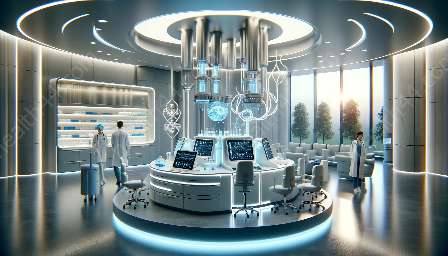Health is a critical aspect of every person's life, and access to medical facilities and services plays a crucial role in ensuring overall well-being. The healthcare landscape has evolved significantly, offering a range of options to meet diverse needs. From traditional hospitals and clinics to the growing influence of telemedicine and medical tourism, the availability and quality of medical services can significantly impact individuals, communities, and even entire regions. This topic cluster explores the various facets of medical facilities and services, delving into their significance, advancements, and impact on health.
1. Hospitals: Pillars of Healthcare
Hospitals form the cornerstone of medical facilities, providing comprehensive care to patients with diverse needs. They offer a wide spectrum of services, including emergency care, surgical procedures, diagnostic testing, and specialized treatments for various medical conditions. The modern hospital setting integrates advanced technology, expert medical professionals, and a range of specialized departments to cater to the complex healthcare needs of patients. In addition, hospitals play a vital role in medical research, innovation, and education, contributing to the overall growth and improvement of healthcare systems.
Key Points:
- Hospital services encompass emergency care, surgery, diagnostics, and specialized treatments.
- Hospitals are hubs for medical research, innovation, and education, elevating the standard of healthcare.
2. Clinics: Localized Care and Convenience
Clinics serve as accessible healthcare avenues, offering primary care, preventive services, and specialized consultations. They cater to a broad range of medical needs, from routine check-ups to chronic disease management. Clinics often provide personalized and localized care, fostering strong patient-doctor relationships and community connections. With the rise of specialized and walk-in clinics, individuals can seek prompt medical attention for various non-emergency conditions, contributing to efficient and widespread healthcare delivery.
Key Points:
- Clinics offer primary care, preventive services, and specialized consultations, promoting community health.
- Specialized and walk-in clinics enhance the accessibility and efficiency of healthcare services for non-emergency conditions.
3. Telemedicine: Bridging Distance and Time
Telemedicine has revolutionized the delivery of healthcare services, especially in remote or underserved areas. This innovative approach utilizes technology to facilitate virtual consultations, remote monitoring, and digital diagnosis, enabling patients to access expert medical care without the constraints of physical proximity. Telemedicine has not only expanded access to healthcare but has also improved the speed and accuracy of medical interventions, making it a valuable asset in addressing healthcare disparities and reducing geographical barriers to quality care.
Key Points:
- Telemedicine brings specialized medical services to remote areas, reducing geographical barriers to care.
- Virtual consultations and digital diagnosis enhance the speed and accuracy of healthcare delivery.
4. Medical Tourism: Global Access to Healthcare
Medical tourism has gained prominence as individuals seek medical treatments and procedures in different countries, often for reasons such as cost-effectiveness, access to advanced treatments, or shorter wait times. This trend has led to the globalization of healthcare services, with patients traveling internationally to access specialized healthcare facilities and expertise. Medical tourism not only provides patients with diverse options for their medical needs but also contributes to knowledge exchange and collaboration among healthcare professionals on a global scale.
Key Points:
- Medical tourism facilitates access to specialized healthcare facilities and expertise on a global scale.
- It promotes knowledge exchange and collaboration among healthcare professionals from different regions.
Conclusion
The realm of medical facilities and services is expansive and constantly evolving to meet the dynamic healthcare needs of individuals and communities. From traditional hospital care to the innovative realms of telemedicine and medical tourism, the diverse landscape of medical services plays a crucial role in enhancing health outcomes and fostering global connectivity in healthcare. Embracing these advancements and understanding their impact is essential in navigating the ever-changing healthcare landscape, ultimately contributing to improved health and well-being for all.

























